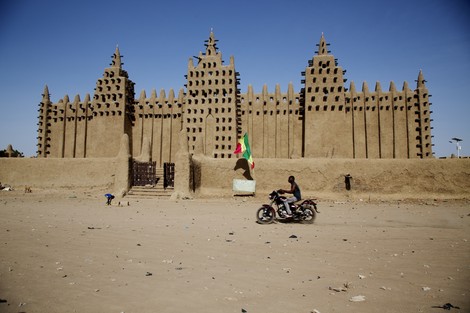Your podcast discovery platform
Curious minds select the most fascinating podcasts from around the world. Discover hand-piqd audio recommendations on your favorite topics.

piqer for: Global finds
Ciku Kimeria is a Kenyan author "Of goats and poisoned oranges" - (https://www.amazon.com/goats-poisoned-oranges-Ciku-Kimeria-ebook/dp/B00HBBWPI6), development consultant, adventurer and travel blogger (www.thekenyanexplorer.com). She writes both fiction and non-fiction focusing on African stories that need telling. She has worked on diverse pieces for various international and local publications including Quartz, Ozy, The East African etc. She has travelled to 45 countries – 16 of them in Africa. 153 countries to go and 63 territories!
"Of goats and poisoned oranges" has been extremely well received in Kenya and beyond. It tells the story of a Kenyan middle aged power couple and their complicated marriage. The novel explores issues of greed, revenge, betrayal and murder. It runs from the 1960s to 2013. It has been described as “Wicked, funny, poignant, wacky, human, a big ball of fun and danger”, “A unique and captivating book”, “Fun and intriguing”, “Impossible to put down once you start reading.”
She recently moved to Dakar, Senegal from Kenya to work on her second novel. She also works at as the Africa Communication Manager at a leading global strategy consulting firm.
She holds a B.S. in Management Science from MIT with minors in Urban Planning and International development studies.
Replastering The World's Largest Mud-Brick Building In Defiance Of Militants
Djenne, a town in central Mali, is home to a UNESCO-protected mosque that is the world's best example of Sudano-Sahelian architecture. Standing at 52 feet high, it is the world's largest mud-brick building. While the current structure dates back to 1907, the first mosque was built in this spot in the 13th century. Once a year, the whole community takes part in replastering the mosque to prevent its walls from drying out and crumbling.
“The crépissage is the most important event of the year, even bigger than Eid-al-fitr, marking the end of Ramadan, or Tabaski, [the Malian equivalent of Christmas],” says Yaro, the 30-year old lawyer and host of the celebration, known as la nuit de veille.
Increasing instability in Mali's Central region as militant and jihadist groups expand activities, threatened to affect this year's crépissage. Eventually though, the community decided to go ahead with their annual ritual to defy the jihadists and show them that they will not cower under their threats.
The ritual is one highly cherished by the community as everyone comes together to ensure their mosque keeps standing. Preparations for the replastering start long before the ceremony. Mud is transported from another part of the river that passes through the town of Djenne. The mud is left to soak for over 20 days by the riverbank.
The mud comes from further down the river and is transported here by trucks and donkey carts. Younger masons then break the blocks into smaller chunks and mix them with water. In the final stages, rice husks are added to the mud, turning it into a soft and sticky paste. The rice works like a glue, holding the mud together and keeping it from cracking as it dries. Then the young masons carry the mixture, in wicker baskets, to pits in front of the mosque in preparation for the event.
Each neighborhood gets a section of the mosque to replaster and they compete to see who can finish their section first.
Stay up to date – with a newsletter from your channel on Global finds.
